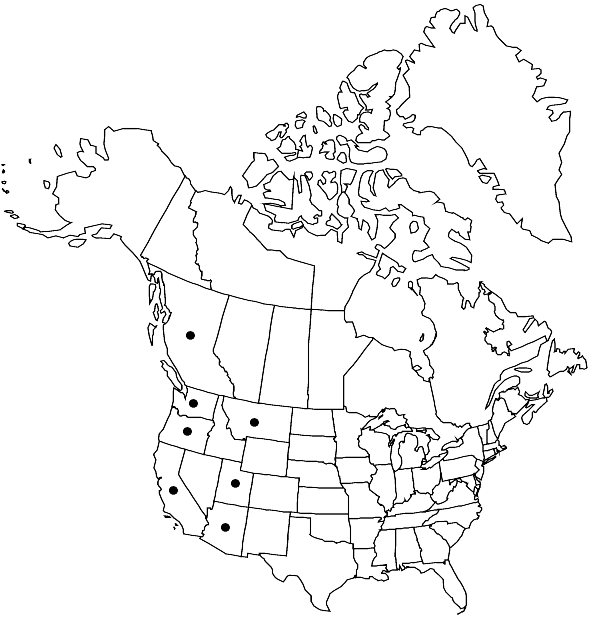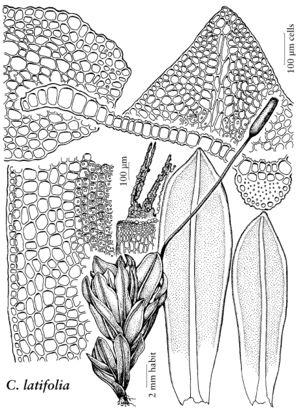Difference between revisions of "Crumia latifolia"
Canad. J. Bot. 44: 610. 1966,.
FNA>Volume Importer |
FNA>Volume Importer |
||
| Line 28: | Line 28: | ||
|elevation=low to moderate elevations (5-1200 m) | |elevation=low to moderate elevations (5-1200 m) | ||
|distribution=B.C.;Ariz.;Calif.;Mont.;Oreg.;Utah;Wash. | |distribution=B.C.;Ariz.;Calif.;Mont.;Oreg.;Utah;Wash. | ||
| − | |discussion=<p>Often locally abundant, Crumia latifolia is sometimes reddish orange in exposed situations. The morphology and ecology of this species are discussed at length by S. Flowers (1973), W. B. Schofield (1966), and A. J. Grout (1928–1940, vol. 1). There is great variation in the thickness and color of the laminal cell walls, possibly correlated with degree of exposure. It has been found in fruit in British Columbia and two stations in California.</p> | + | |discussion=<p>Often locally abundant, <i>Crumia latifolia</i> is sometimes reddish orange in exposed situations. The morphology and ecology of this species are discussed at length by S. Flowers (1973), W. B. Schofield (1966), and A. J. Grout (1928–1940, vol. 1). There is great variation in the thickness and color of the laminal cell walls, possibly correlated with degree of exposure. It has been found in fruit in British Columbia and two stations in California.</p> |
|tables= | |tables= | ||
|references= | |references= | ||
| Line 52: | Line 52: | ||
|publication year= | |publication year= | ||
|special status= | |special status= | ||
| − | |source xml=https://jpend@bitbucket.org/aafc-mbb/fna-data-curation.git/src/ | + | |source xml=https://jpend@bitbucket.org/aafc-mbb/fna-data-curation.git/src/8f726806613d60c220dc4493de13607dd3150896/coarse_grained_fna_xml/V27/V27_946.xml |
|subfamily=Pottiaceae subfam. Pottioideae | |subfamily=Pottiaceae subfam. Pottioideae | ||
|genus=Crumia | |genus=Crumia | ||
Revision as of 17:58, 18 September 2019
Stems sparsely radiculose; rounded-pentagonal in section. Leaf with costal abaxial cells elongate. Sporophytes 1(–2) per perichaetium. Seta reddish brown in color, ca. 1.4 mm, twisted clockwise below, counterclockwise above. Capsule with reddish brown theca, peristome teeth of 7 articulations held together by a hyaline membrane. Calyptra ca. 3 mm.
Phenology: Sporophytes mature spring–summer (May, Jun, Jul).
Habitat: Limestone, calcareous shale, siliceous and conglomeritic rock, roadbank, wet areas
Elevation: low to moderate elevations (5-1200 m)
Distribution

B.C., Ariz., Calif., Mont., Oreg., Utah, Wash.
Discussion
Often locally abundant, Crumia latifolia is sometimes reddish orange in exposed situations. The morphology and ecology of this species are discussed at length by S. Flowers (1973), W. B. Schofield (1966), and A. J. Grout (1928–1940, vol. 1). There is great variation in the thickness and color of the laminal cell walls, possibly correlated with degree of exposure. It has been found in fruit in British Columbia and two stations in California.
Selected References
None.
